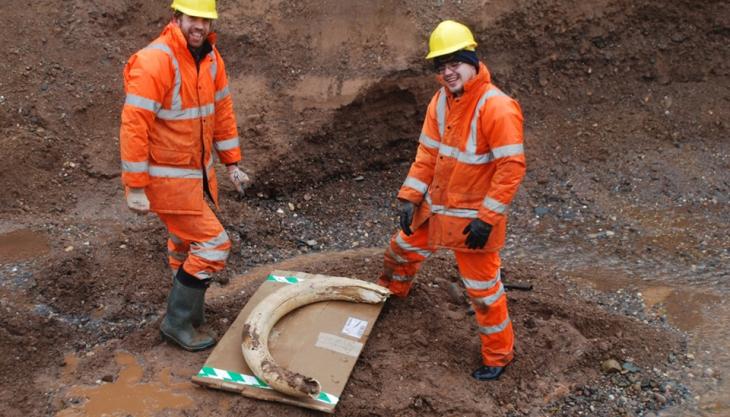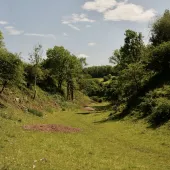Mammoth discovery at Clifton Quarry

Woolly mammoth tusk unearthed at Tarmac site in Worcestershire to go on display in local museum
A WOOLLY mammoth tusk discovered at Tarmac’s Clifton Quarry, in Worcestershire, is about to go on display at a local museum. Having been spotted by a plant driver at the site, managers called in Worcestershire County Council’s Archive and Archaeology Service, to investigate the discovery.
The size of the tusk suggests that it was from a young male animal that could have weighed up to 6 tonnes and stood up to 11ft tall at the shoulder. The find has been slowly dried out and conserved by specialist conservator Nigel Larkin and will go on temporary display at Worcester City Museum and Art Gallery from Saturday 20 August.
Tarmac estates manager Nick Atkins said: ‘We’re extremely excited that such a significant discovery has been made at our site and are very keen to see what else we can find out about it. It’s fantastic to discover something like this which is so well preserved and will help us and the specialists find out more about the creature and its history.’
Senior archaeological project manager Robin Jackson added: ‘Thanks to the very prompt and responsible actions of the quarry staff, we’ve been able to recover this very interesting find from Worcestershire’s distant past.
‘Discoveries of mega fauna (or giant animal) bones in Worcestershire are rare, and therefore this find is an important one which will hopefully inspire people to learn more about Palaeolithic Worcestershire.’
Commenting on the discovery, Deborah Fox, curator of archaeology and natural history at the City Museum, said: ‘We’re delighted to be able to display this wonderful specimen and would like to pay tribute to Tarmac for their swift action and care of this important discovery, and to Worcestershire’s Archive and Archaeology Service’s professionalism and expertise.
‘It’s been many decades since a specimen like this came into the City Museum and we’re very pleased to have it here.’
An initial specialist assessment of the find has confirmed it to be the remains of a tusk from a Mammuthus primigenius (woolly mammoth) – these animals roamed the Worcestershire countryside alongside Neanderthal man around 50,000 years ago during a period known as the Palaeolithic era.









